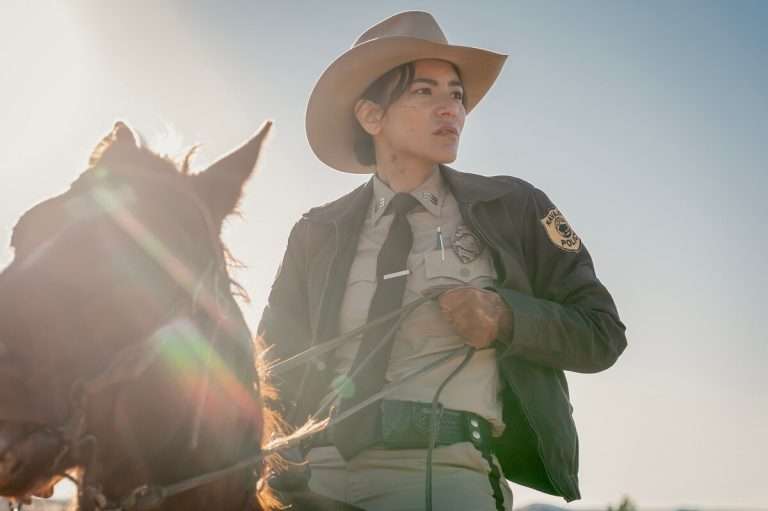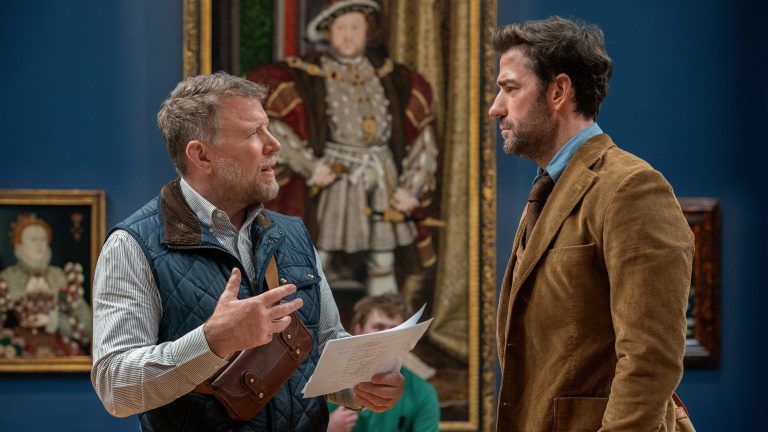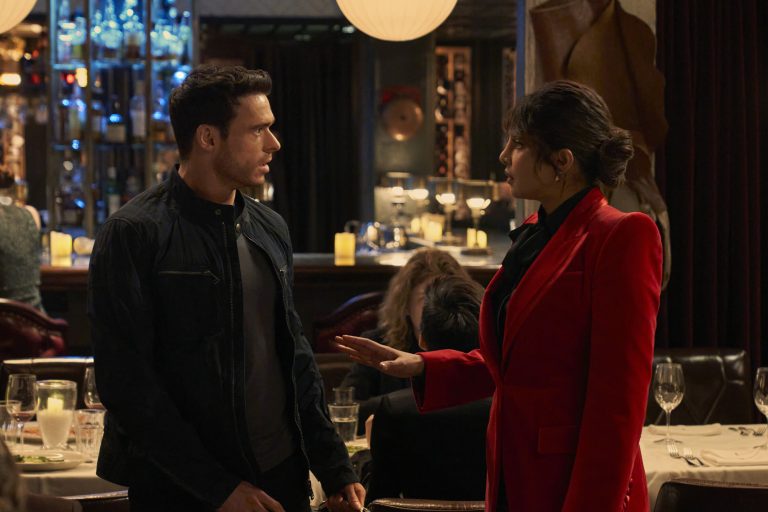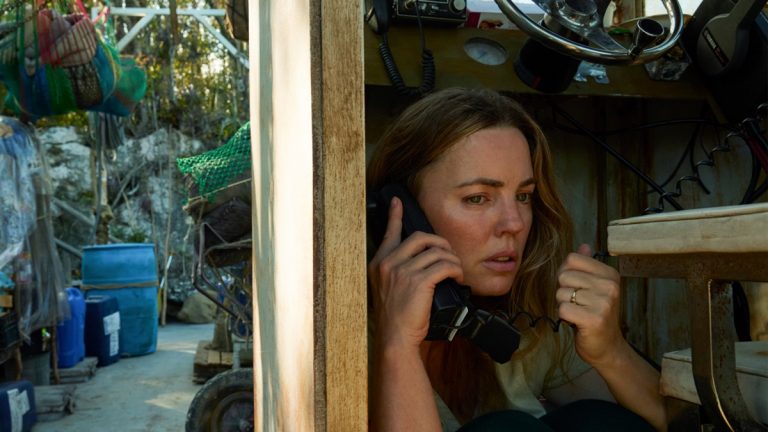“The Last of Us” has become a sensation after just one episode and within a week of its release. The HBO adaptation of the video game, which has been a hit since its release in 2013, has knocked it out of the park in every category in its pilot episode. Apart from some apparent gatekeepers of the gaming community, there have not been many naysayers. In fact, the show’s faithfulness toward its source material has instead received a lot of appreciation. That’s understandable given that the game’s creator, Neil Druckmann, is one of the show’s co-creators, along with “Chernobyl” creator Craig Mazin.
Following a near-perfect pilot, the show faced the challenge of maintaining the momentum with this week’s episode. Thankfully, the second episode has succeeded in rising up to that challenge and has also managed to top the first episode. That is, if we take the general consensus into account. With Druckmann making his debut as a director, the episode being incredibly authentic to the game was a given. Still, it particularly stands out because of three aspects which include one major change from the game. We are going to talk about all three of those, and the *spoiler alert*, i.e., the weirdest possible “kiss” ever.
Obviously don’t read ahead if you haven’t seen the episode.
“The Cold Open”
Jakarta, Indonesia, September 24th, 2003. Life is going on just like every day. But suddenly, a middle-aged woman is interrupted while having lunch at a cafe. The fear on her face is palpable since a group of military personnel has come to visit her. Though the woman is shocked by the intrusion, the Indonesian military official assures her that she isn’t picked up for committing any crime.
Soon, we learn that she is Ibu Ratna (Christine Hakim), a professor in mycology (the study of fungi). She is taken to what looks like a government science lab facility. Covered head-to-toe in protective gear, she enters a sealed examination room and examines the corpse of a woman for the live strand of cordyceps.
She is surprised as cordyceps usually can’t live inside the human body. Alas, (in one of the most horrifying scenes, even though you anticipate it) she discovers moving tendrils coming out of the mouth of the dead body, and she leaves the room immediately in horror. The scene cuts to the explanation, where the official informs her that the victim is a flour (this is important, coming to this in a while) factory employee. She has bitten other people, clearly hinting at a potential spread. Ibu Ratna, being an expert, quickly figures out everything despite still finding the whole thing unbelievable. “Bomb this city”, is her only solution since there is no cure or vaccine.
All these happen in the first five minutes of the second episode, “Infected.” The fantastic ‘cold open’ – a narrative technique that instantly defines the tone and effortlessly immerses the viewer into the proceedings – ties up very well with the cold open of the first episode, where a scientist talks about the possibility of the fungus surviving in human bodies, back in 1969.
Indonesia is a tropical country, which naturally fits as the origin of the outbreak. Also, if you have paid attention in the first episode (“When You’re Lost in the Darkness”), then you must have noticed that both Joel and Tess avoid flour products. With the Flour factory worker being the first victim, this makes very much sense now. Also, Ellie eating a sandwich (bread has flour, in case you are wondering) in “Infected” makes sense, further establishing her immune nature.
The ‘cold open’ also feels eerily relatable to us. It comes across as a clear reminder of the early, confusing days of the Covid-19 pandemic. This makes the show more accessible to us as a “what it could have been if things got out of hand”, compared to “how it was for us”. With this ‘cold open’ leading us into the episode’s main story, we connect with the characters more and feel the urgency of their situation better. This is a great creative choice backed by fantastic writing.
I can’t wait to see what they do with the next cold open.
The Impeccable Production Design
As this episode follows Joel, Tess, and Ellie’s journey through the ruined and abandoned metropolis, we, like Ellie, get our first view of the world outside QZ. Creating the right kind of immersive and tangible atmosphere is very essential to the show.

With the source material in hand, Druckmann’s possible brief to his production designer was to stay true to the game while also being creative. That is precisely what Production designer John Paino did, which you can understand if you search for the game-and-show comparison of this episode.
Whether it’s the rubble-strewn ruins of the hotel or the intimidating, spine-chilling dark interiors of the museum, Paino does stupendous work by making those look exactly like how they looked in the video game, but with a cinematic flair. The production design plays a very essential role in this episode, as this is where we get our proper introduction to the world of the show. Paino’s work only elevates our viewing experience, and we can’t wait to see more of this world in the upcoming episodes.
The Major Change
While the happenings in the episode are similar to that of the game, one significant change should be called “game-changing.” Yes, we are talking about the death of Tess (Goodbye to Anna Torv, clearly the MVP of the episodes).
As Joel, Ellie, and Tess get inside the museum to find a way out, they come across the “Clickers” – the show’s version of the third stage infected (from the game), which is equally scary here. With the ‘clickers’ unable to see anything because their face is covered by fungus, the trio tries to get through in silence. But that doesn’t work out after all, and they get attacked. They manage to beat the ‘clickers’ and escape, but Tess gets bitten by one of them (which is revealed in the end only).
After reaching the state house, the trio discovers that all the Firefly members are dead, as one of them got infected. Tess tries her best to find a map to continue the journey to the Firefly camp westward, the one that Marlene mentioned. When Joel shoots to prevent one infected Firefly member from attacking them, the entire network of infected all over Boston gets the alert through the cordyceps network. Realizing they are doomed, Tess finally shows her bitemarks and asks Joel to take Ellie away while she tries to hold things off as much as possible.
As you would expect, Tess does meet her end soon, but her sacrifice and self-made explosion help Joel and Ellie to get away. But the significant change here is Tess dying, not while fighting Fedra agents. The show introduced the antagonistic background faction group run by former US military members in the first episode. Still, the show’s decision of Tess dying while trying to blow the infected makes much more sense as the infected are the real threat in this world more than Fedra. This also makes Tess’s sacrifice extremely meaningful in the story’s context. The character will be dearly missed.
And now, about the kiss. There are so many theories going around on the internet. But after a little digging, what I basically found out is that Craig Mazin wanted to put it this way to show how the infected react when someone is not trying to fight them off. As Tess already knew what would happen to her, in her final moments, she stood still instead of trying to fight, which would have gone in vain until she blew up everything, including herself, to smithereens.




![Encanto [2021] Review: Lin-Manuel Miranda’s Exquisite Songs Help This Dazzling Animation Sparkle](https://79468c92.delivery.rocketcdn.me/wp-content/uploads/2022/01/Encanto-2021-768x432.jpg)


